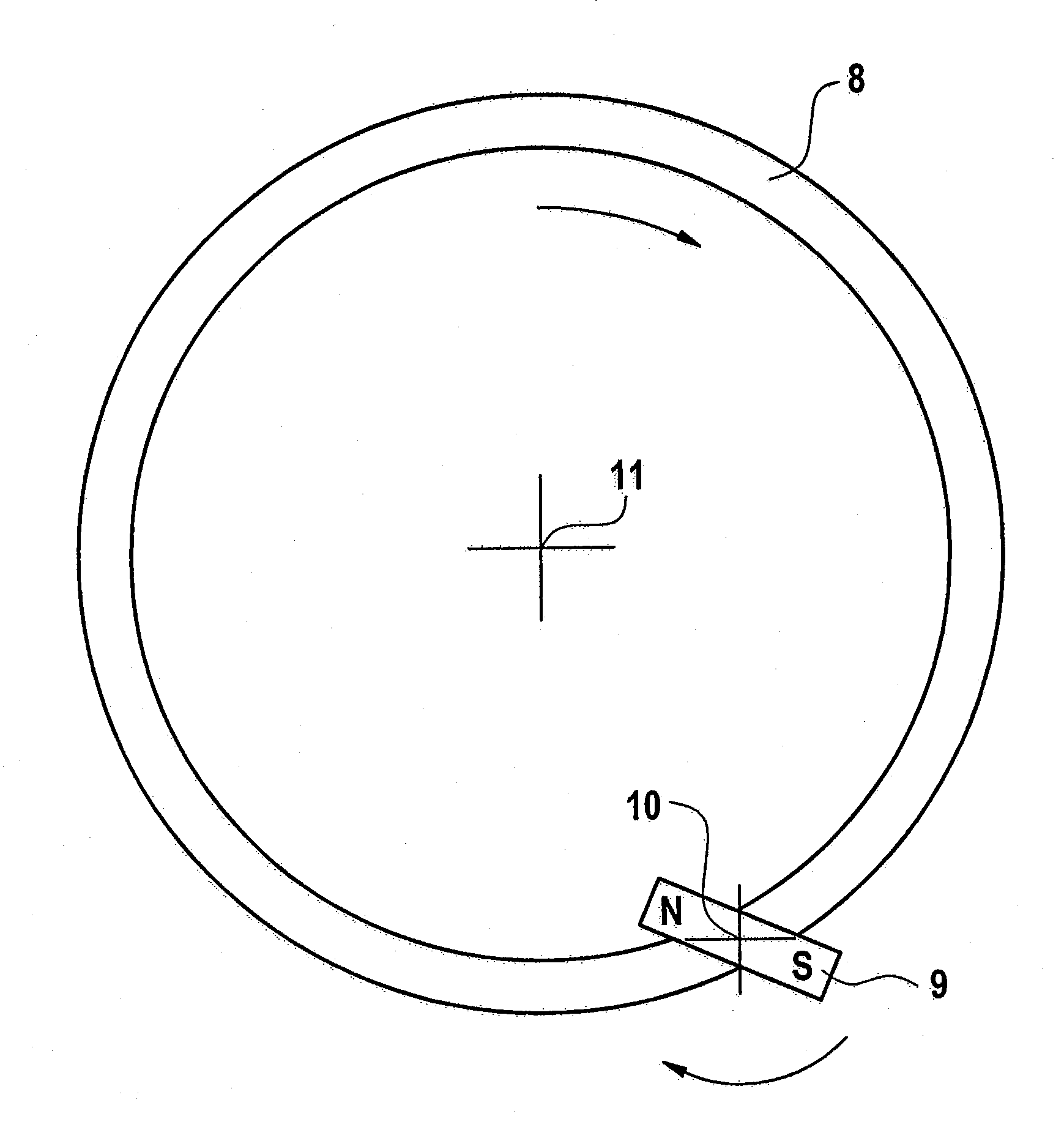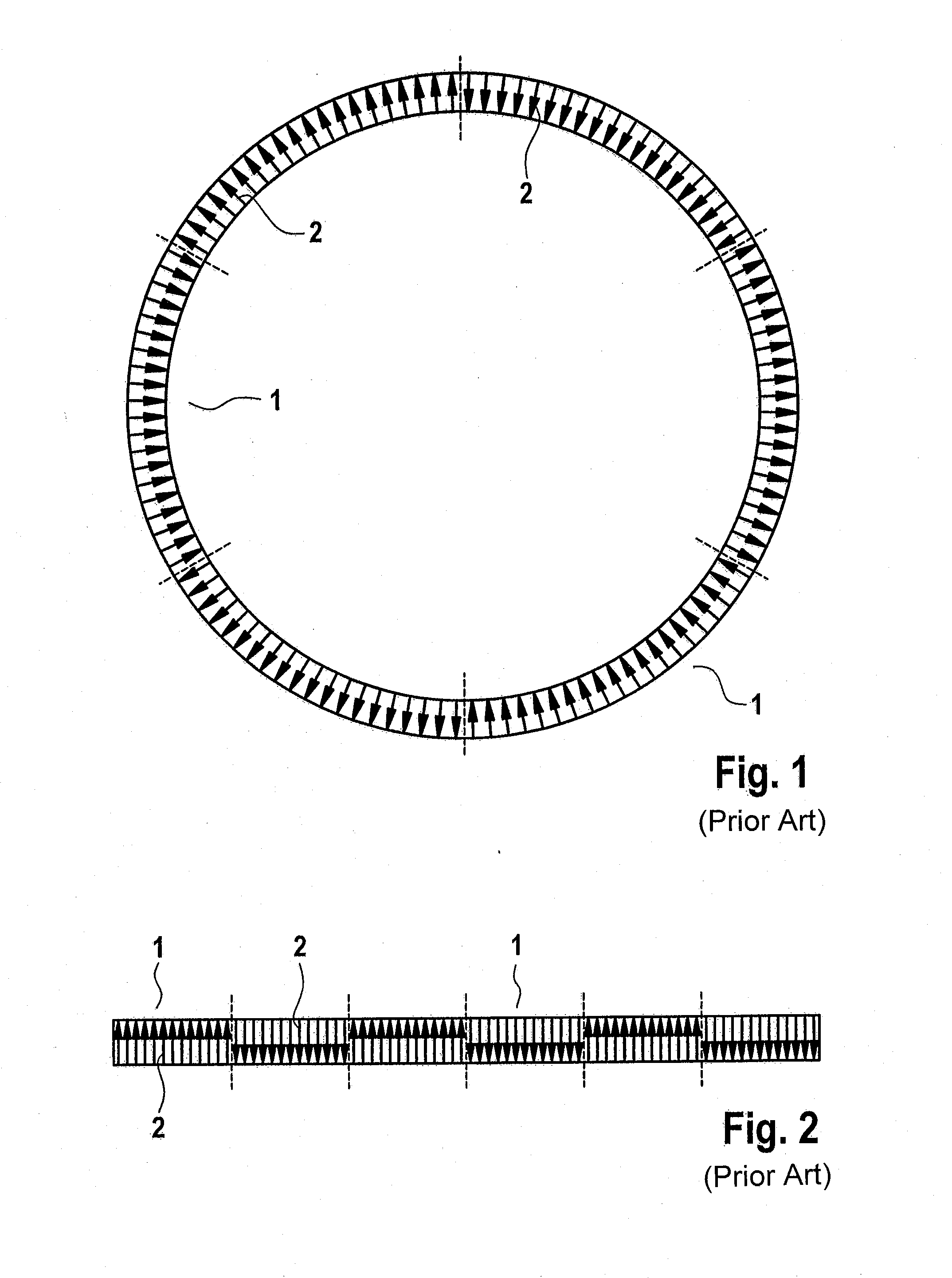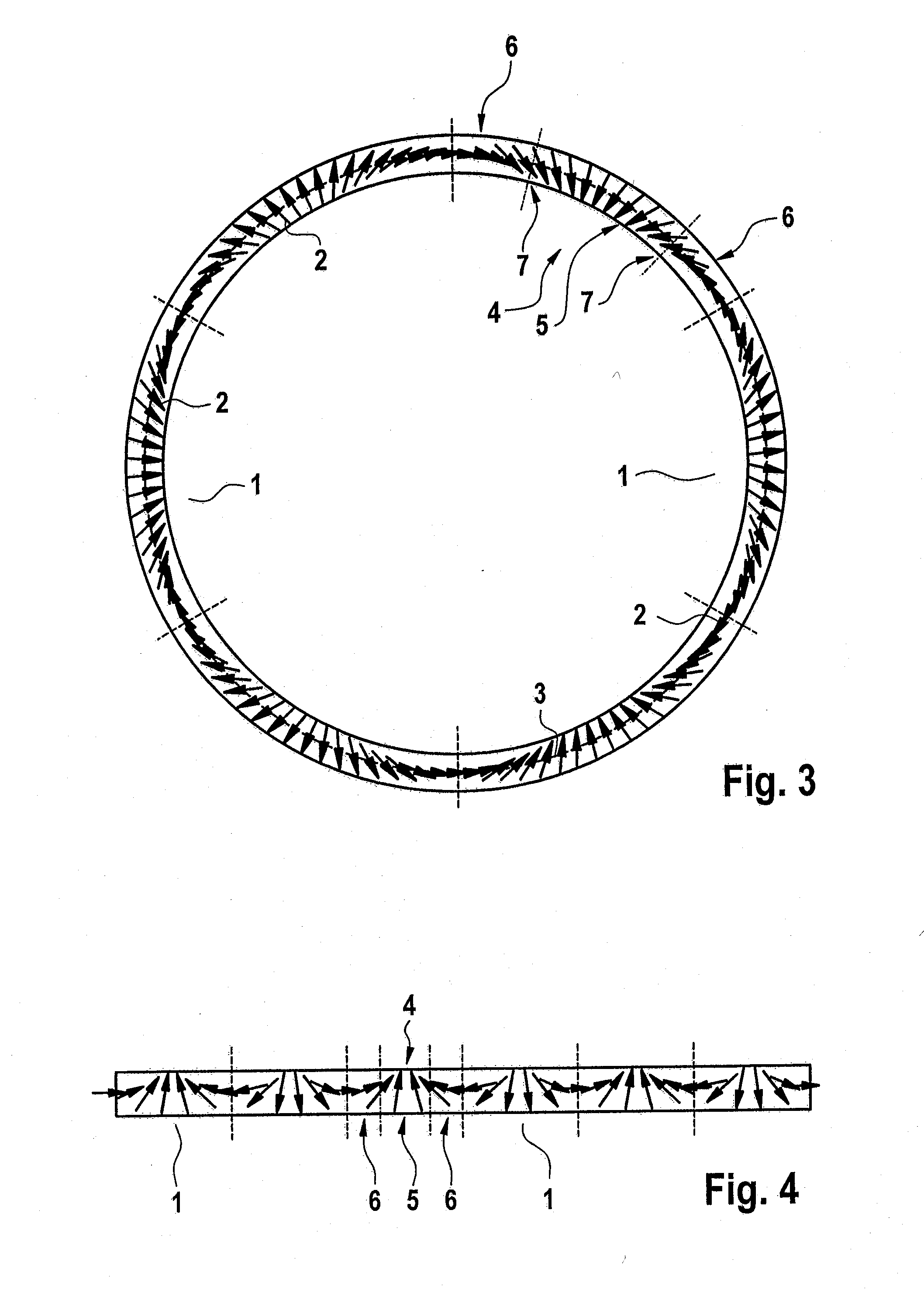Magnetic encoder
- Summary
- Abstract
- Description
- Claims
- Application Information
AI Technical Summary
Benefits of technology
Problems solved by technology
Method used
Image
Examples
Embodiment Construction
[0042]FIG. 1 shows an annular encoder with six poles and FIG. 2 shows a linear or straight encoder with six poles, both encoders being formed in a conventional manner. The magnetization directions 2 of individual subregions of the poles 1 are represented by arrows. The poles 1 are magnetized in a homogeneous or block-like manner. The encoders therefore have an alternating north / south magnetization. The arrangement of the poles in series forms, for example, the encoder track.
[0043]A magnetic field sensor element (not illustrated) detects, in the close range or when the air gap is relatively small, the block-like or box-profile-like magnetizations of the poles over their homogeneous magnetic field. Only when there is a relatively large air gap can the magnetic field sensor arrangement carry out an angular measurement in which the detected angle of the magnetic field rotates with any kind of uniformity along the encoder track, since, when there is a relatively large distance from the e...
PUM
| Property | Measurement | Unit |
|---|---|---|
| Angle | aaaaa | aaaaa |
| Angle | aaaaa | aaaaa |
| Angle | aaaaa | aaaaa |
Abstract
Description
Claims
Application Information
 Login to View More
Login to View More - R&D
- Intellectual Property
- Life Sciences
- Materials
- Tech Scout
- Unparalleled Data Quality
- Higher Quality Content
- 60% Fewer Hallucinations
Browse by: Latest US Patents, China's latest patents, Technical Efficacy Thesaurus, Application Domain, Technology Topic, Popular Technical Reports.
© 2025 PatSnap. All rights reserved.Legal|Privacy policy|Modern Slavery Act Transparency Statement|Sitemap|About US| Contact US: help@patsnap.com



